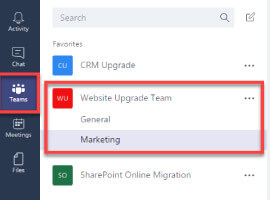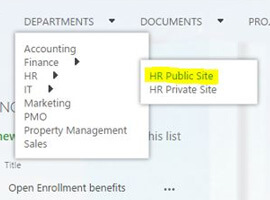Yet, worryingly academic and practitioner studies have consistently found that levels of employee engagement in UK organisations is low and that disengagement is deepening (Saks, 2006). One leading study reports that on average, across all demographic groups and all industry sectors, just 52 percent of employees in UK firms can be characterised as ‘engaged’. The financial services and consumer goods sector have the lowest engagement scores with 35 percent and 34 percent respectively (Whenman and Pantelli, 2014). This problem has been dubbed an, ‘engagement gap’, and it has been claimed that it costs businesses billions of pounds in lost productivity each year.
Research also shows that technology has a crucial role to play in enabling organisations to create workplace environments which foster high levels of employee engagement. For example, Deloitte’s survey of 3,600 employees of major European organisations showed that when knowledge workers have access to digital collaboration tools they are up to 17 percent more satisfied with the workplace, and are 22 percent more likely to believe that their employer cares about morale. Yet, just 9 percent of respondents believe that their organisation has an effective computing environment for sharing and collaboration (Guest, 2014). To be effective technology must be combined with a culture which promotes collaboration, innovation, and trust but worryingly more than half the respondents to the survey said that they work in an environment where collaboration is not the norm and innovation is suppressed
These trends show that there are opportunities for UK organisations to create significant differential advantages by fostering higher levels of employee engagement, and that this can be achieved through a strategic approach to the workplace which aligns management approaches to talent, technology, and the physical work environment. This is the digital workplace.
The Engagement Gap |
Employees are the face of a business, sources of innovation and knowledge, and the personification of brand. In a dynamic, global, and increasingly competitive business environment the workforce is an organisation’s key strategic asset and source of competitive advantage. Herb Kelleher, founder and Chairman emeritus and former CEO of Southwest Airlines neatly summed up this business philosophy,
“If the employees come first then they’re happy… A motivated employee treats the customer well. The customer is happy so they keep coming back, which pleases the shareholders. It’s not one of the enduring green mysteries of all time, it’s just the way it works”
Colloquially employee engagement is about keeping employees happy and motivated. To social scientists it is a multi-dimensional construct which comprises of all the different facets of the attitudes and behaviours of employees towards the organisation (Kumar and Pansari, 2015). It is concerned with the degree to which organisational members employ and express themselves physically, cognitively and emotionally as they perform their roles (Kahn, 1990). Engaged employees have high levels of energy, are enthusiastic and immersed in their work. They invest their complete selves, heads, hands and hearts, into their roles (Rich et al., 2010)
Since the concept of employee engagement first appeared in the management literature in the mid 1990’s two consistent themes have emerged (Saks, 2006). First, it is key to an organisations success and competitiveness. Numerous academic studies have found that organisations with employees which are characterised as engaged have higher shareholder returns, profitability, productivity and customer satisfaction. Conversely organisations where employees are characterised as disengaged have reported challenges including a high attrition rate with associated recruitment and training costs and outgoing employees poaching valuable clients and knowledge assets, low productivity, and an absence of a sense of ownership (Kumar and Pansari, 2015). Second, it has been reported time and time again in both academic and practitioner studies that employee engagement is low and is on the decline.
This growing engagement gap can be seen as consequence of organisations struggling to keep pace with the social, demographic, and technical changes affecting the workforce. Research shows that these changes include (Brown et al., 2015):
- More powerful and less loyal employees
The internet and social media make it easier for employees to find new job opportunities and to gain intelligence about a company’s workplace and culture. People are increasingly mobile and prepared to relocate for work and technology makes it easier for people to work remotely
- Employees motivations have changed
Studies have shown that today twice as many employees motivated more by work passion than career ambition and so they increasingly value opportunities to learn and innovate
- Changing world of work
Employees today work more hours and are continuously connected to their jobs through pervasive mobile technologies. Work is increasingly complex non-routine and performed in fast changing, cross functional, and global teams that bring people together at a rapid rate
- Consumerisation of IT
A decade of experience of beautifully designed, sophisticated, powerful yet simple to use digital devices and services at home has raised expectations of the technology in the workplace
Taken together these trends have led some commentators to suggest that employees are now like customers and that companies should treat them as volunteers not workers.
Employee Engagement & Technology |
The workplace exists at the intersection of the social and material worlds. Technology and the ways in which people organise and get work done are so now fundamentally intertwined that it no longer makes any sense to talk about one without the other. In today’s organisations almost every business initiative has a technology component, every work process includes digital duties and personal technology is ubiquitous. It should come as no surprise then that technology has a crucial role to play in employee engagement.
My research and experience shows that technology, and digital communication and collaboration technologies in particular, can have a positive impact on employee engagement in the following ways;
Making work meaningful
The psychological condition of meaningfulness has been recognised by researchers as an important factor in employee engagement. A lack of meaning in one’s work can lead to feelings of alienation or disengagement (May et al., 2004). Having a sense of meaning to work was cited as the fourth most important factor in choosing to work for an organisation in the Deloitte 2016 Millennials survey (Deloitte, 2015). Technology can contribute to making work meaningful in two ways.
- Co-worker relationships
My own research shows that digital communication and collaboration technologies, especially unified communications and enterprise social networks, can play a key role in enabling rich, positive relationships between co-workers. One participant in my study of the use of enterprise social network usage in a global technology company told me,
“The emotional connection that I have to the company has been one of the biggest changes which has resulted from my use of the ESN… I’ve been able to network with different people, to build better relationships with people that I would never have met, got to become friends with those people, and those people that I am friends with, that relationship is much stronger within the organisation”
Academic research shows that individuals who have rewarding interpersonal interactions with their co-workers also experience greater meaning in their work (May et al., 2004), but it can be challenging building, maintain, and nurture such relationships in the modern working environment where globalisation and the increased geographic spread of many businesses has reduced opportunities for face-to-face communication, and the economic downturn has forced many teams to cut staff numbers to reduce costs.
- Social identities
Individuals derive meaning from the social identities they construct within organisations (May et al., 2004). Academic research has found that social roles and relationships are increasingly inseparable from people’s interactions with information technology (Carter, 2015). My own research supports this conclusion, I have found evidence that developing a personal brand, or constructing a social identity in the workplace is one of the most cited benefits and uses of enterprise social networks. For example, one interviewee in a global technology company told me with regard to their use of the corporate enterprise social network,
“…It’s the visibility because people see what you’re posting… you know lots of people claim to be an expert in something, but this allows you to demonstrate it”
Enabling flexible working & promoting a good work / life balance
The Deloitte 2016 Millennial survey (Deloitte, 2015) found that good / work life balance and flexible working in terms of hours and location were two of the top three factors valued by millennials when evaluating organisations to work for. Seventy Seven percent of respondents to the survey said that they would like to have greater mobile connectivity via tablets and smartphones. Seventy five percent said they would like to work frequently work from home or other locations where they feel more productive, this is nearly double the forty three percent that currently do.
Fostering a sense of pride
Pride is a feeling of accomplishment when one’s competence and achievements are recognised and appreciated and this helps to motivate people to continue achieving in the future. Praise from managers and peers are powerful motivators. Traditionally organisations have invested in recognising top performers with gifts or prizes, or organising annual celebration events. These approaches can be costly and time consuming. Digital communication and collaboration tools afford new ways to provide meaningful feedback and recognition.
Management recognition of achievement
Managers can use digital technologies to publically acknowledge and praise the achievements of employees. One academic case study showed that revenues increased in an organisation where the CEO used unified communication tools to run live Web TV Shows in which he publically called each sales team and asked them to report their results and thanked them for their achievements. During the shows other teams posted messages on the enterprise social network to cheer their colleagues performance (Quy and Shipilov, 2012). A less time consuming way for executives to make employees feel proud about their accomplishments is to click the “Like” button or comment next the posts of specific employees who they wish to single out. These symbolic and inexpensive responses have been shown to produce substantial returns in terms of increased employee motivation.
Building a professional reputation amongst peers
My research shows that enterprise social networks and collaboration platforms are commonly used by employees to build a professional reputation within their organisation. One way this can be achieved through gamification techniques where employees receive badges, points or awards for contributions made to online communities. In some organisations these have been linked to appraisal processes. Enterprise social networks also provide a means for employees to showcase their work.
Developing a reciprocal relationship between employee and the organisation
Employee engagement can be characterised as a two way relationship between the employee and the organisation. Studies have shown how employees choose to engage themselves to varying degrees in response to the resources that they receive from employers. Bringing oneself more fully into one’s work role and devoting greater amounts of cognitive, emotional and physical resources is a very profound way for individuals to respond to an organisations actions. T
Thanks to innovations from companies such as Apple, Amazon, Facebook, and Google people have become sophisticated consumers of digital technologies in their personal lives, and they increasingly demand the same level of simplicity, speed and reliability from enterprise solutions as they are used to home. In the Deloitte 2016 Millennial survey (Deloitte, 2015) investing in a using the latest technology was cited as one of the top ten reasons for choosing to work for an organisation. Failure to meet these expectations can lead to dissatisfaction and disengagement as employees feel that they are not been given the resources necessary to do their jobs.
Building trust
Trust in the work place is essential to building employee engagement. The relationship with one’s immediate manager can have a dramatic impact on an individual’s perception of the safety of a work environment. Technologies such as desktop video conferencing, instant messaging and enterprise social networks can play a key role in facilitating these relationships especially in work environments where employees work flexible hours or remotely.
Creating opportunities for learning, teaching and innovation
Knowledge workers value opportunities for continuous innovation, learning and teaching (Drucker, 1999). Research has shown that social learning through interaction with peers whilst on the job has a key role to play alongside formal learning and training. Digital tools can be used to meet these needs in a number of very specific ways.
- Digital communities of practice
Social and collaboration tools can be used to create virtual spaces for individuals who share common professional interests to connect across geographic and organisational boundaries to exchange ideas and information, and to work together on business problems
- Lessons Learned
Content management and social tools enable teams to capture lessons through after action reviews, project post-mortems and event debriefs and to share this information across the enterprise in an efficient and effective manner. This provides a valuable way to share experiences that can be applied to other similar work situations
- Transfer of good practices
Social tools can provide an efficient and effective way for different areas of an enterprise to participate in benchmarking exercises and to share good practices across the organisation
- Expertise location systems
Enterprise social networks provide a low cost and maintenance way to identify subject matter experts across a distributed enterprise
- Organic knowledge base
MOMyur research shows that one of the most commonly cited benefits of enterprise social networks is the that over time the platform grows become an organic knowledge base with frequently asked questions and answers
Empowering employees to act autonomously
Knowledge workers value opportunities to take responsibility for their work and productivity and to manage themselves. Digital communication technologies can play a key role in empowering employees to act autonomously. For example our research conducted inside a global technology firm found that managers used the corporate enterprise social network as a key communication channel with dispersed teams to share objectives and guidelines, to gain input and ideas and to solicit feedback. Knowledge workers routinely narrated their work and activities on the network, a practice referred to as, ‘Working out loud’, this provided managers with valuable insight into the status and activities of team members. These working practices reduced the need for planning meetings and status updates providing the employees with the freedom to act within a flexible framework of management guidelines and oversight.
 About the Author:
About the Author:
I have advised medium & enterprise organisations in the UK and Europe on their internal digital workplace strategies for over 10 years. I have led knowledge management, collaboration, intranet, enterprise social, & big data & analytics projects for clients across all sectors but have a particular focus on financial services. In my current role at Deloitte I have developed a Digital Workplace Assessment & Planning Framework which enables organisations to take a holistic perspective on the workplace by aligning approaches to people, technology, location & the physical workspace. I am the author of the book “The Art of SharePoint Success: Delivering Business Value From SharePoint Investments” which was published in 2012. I am a regular columnist for industry website CMSWire. I am a speaker at technology & industry events & have presented at events across the USA & Europe. My background is in software development & IT architecture. My focus for the past 10 years has been on the Microsoft productivity suite especially SharePoint, Office 365 & Yammer.











